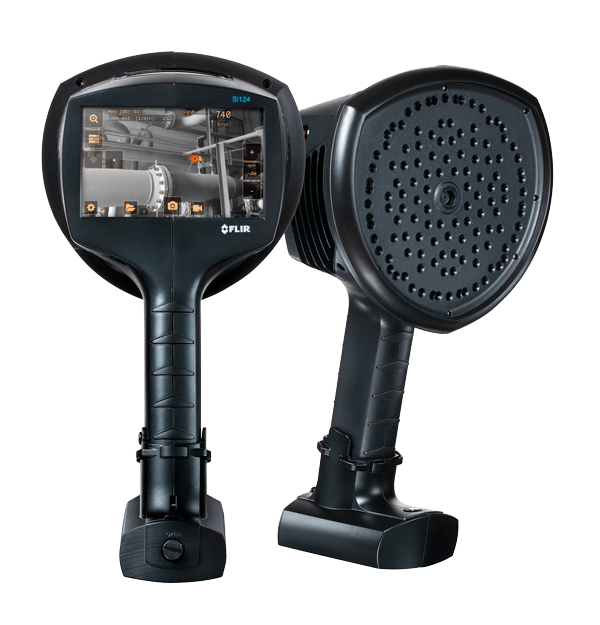Reducing Carbon Dioxide Emissions With an Acoustic Air Leak Detector

In a quest to reduce waste, a company specializing in leak prevention discovered that an acoustic camera is the most efficient solution in the market to help lower the carbon intensity of compressed air systems and save energy costs.
Undetected air leaks cause significant energy waste and financial losses in manufacturing facilities, where compressed air is widely used as a medium for transferring the energy needed in industrial processes. Leaks are to blame for many issues including wasted energy, drops in system pressure, increased production costs, and lowered efficiency. Furthermore, air leaks shorten the equipment’s service life and lead to shortened maintenance intervals, unscheduled downtime, and potential safety hazards. High leakage rates also generate unnecessary carbon dioxide (CO2) emissions, which are widely recognized as the primary driver of global climate change. Detecting compressed air leaks in time is therefore an effective means of reducing carbon emissions.

FLIR Si124 Acoustic Imaging Camera
On a Mission To Eliminate Waste
A company specializing in leak prevention solutions, such as leak-stopping agents for oil and gas and compressed air leak diagnosis services, was looking for an air leak detector to help its customers reduce waste. The company estimates that depending on the size of the factory, a single air leak can average about 300 kilograms of CO2 emissions per year. According to their trial calculation, the occurrence of 47 air leaks in one factory will lead to a power consumption of about 15,000 kWh, but even higher consumption is possible as air leaks cause the compressors to overwork. To find a remedy for air-leak-ridden businesses that continually consume more electricity and produce increasing amounts of CO2 emissions, the company needed an air leak detector that would accurately identify leak points and provide leak size and cost estimates in real-time.

Timely detection of compressed air leaks is an effective way to reduce CO2 emissions。
Dramatic Improvements in Leak Detection Speed and Accuracy
When using the acoustic camera such as the FLIR Si124-LD Plus, the company and its customers soon discovered that the device was able to detect leaks, save costs and help the environment by reducing CO2 emissions more efficiently than any other solution.
Since the introduction of the acoustic camera, the detection speed has improved dramatically, and it is now possible to detect leaks from a distance of several tens of meters.
“Since the flow rate and cost of leaks can also be checked on the screen, I feel that the awareness of on-site personnel regarding leaks has changed,” one customer working in manufacturing describes their user experience. Another customer, who had previously used a competing air leak solution, reported having immediately noticed major performance improvements when trying the acoustic camera.
Benefits of an Acoustic Camera for Air Leak Detection
- Saves time, energy and costs and reduces carbon footprint by locating hidden compressed air leaks in time.
- Ensures operational continuity through early detection of air and gas leaks.
- Scans large areas quickly and pinpoints critical problems accurately, even in noisy industrial environments.
- Requires minimal training and is easy to incorporate into the maintenance cycle.
- Provides real-time results and actionable data for maintenance and repair plans through machine-learning-driven analytics.

FLIR Thermal Studio Suite with the Si-Series Plugin
For more information about thermal imaging cameras or about this application please visit: www.FLIR.com/si124
